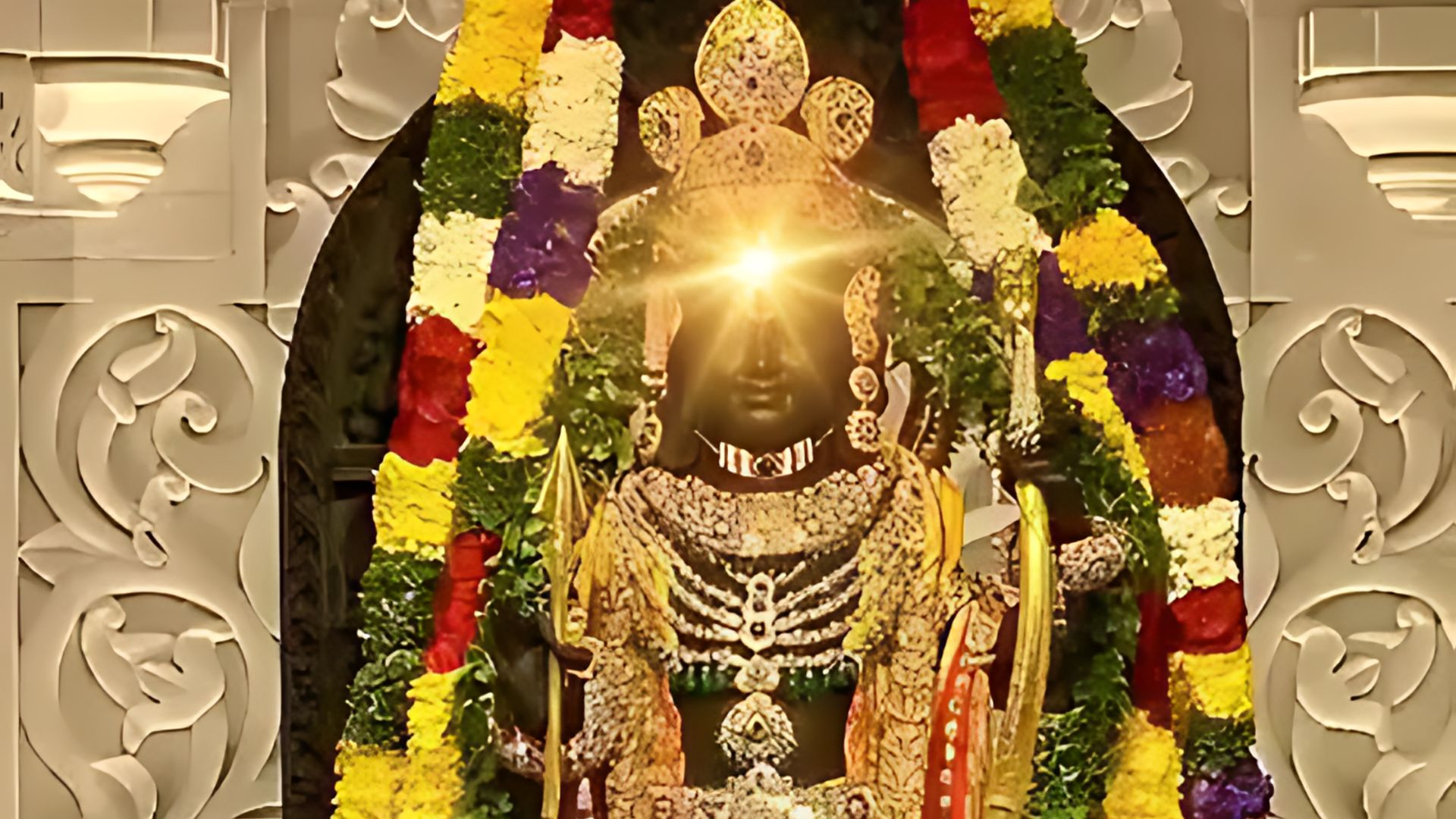The recent ‘Surya Tilak’ ceremony at Ayodhya’s Ram Temple during Ram Navami has garnered attention worldwide for its unique fusion of science and tradition. This ceremony involved directing a beam of sunlight onto the forehead of the Ram Lalla idol, creating a mesmerizing spectacle for devotees. But how was this extraordinary event achieved? Let’s delve deeper into the science and engineering behind this remarkable feat.
A team of ten distinguished Indian scientists, commissioned by the temple trust, developed a state-of-the-art apparatus using mirrors and lenses to direct a 5.8-centimetre beam of sunlight onto the deity’s forehead. This mechanism, known as the ‘Surya Tilak mechanism,’ represents a remarkable fusion of science, engineering, and religious tradition.
#WATCH | ‘Surya Tilak’ illuminates Ram Lalla’s forehead at the Ram Janmabhoomi Temple in Ayodhya, on the occasion of Ram Navami.
(Source: DD) pic.twitter.com/rg8b9bpiqh
Advertisement · Scroll to continue— ANI (@ANI) April 17, 2024
What Are Mirrors and Lenses? They are tools that help focus and guide light. In this case, they ensure the sunlight goes exactly where it’s supposed to—on the idol’s forehead.
Made of Quality Material: The machine’s parts are made of strong brass and coated to ensure the sunlight doesn’t scatter and to protect the idol from heat.
Following the Sun: Collaborating with experts from the Indian Institute of Astrophysics (IIAP) in Bengaluru, the team employed advanced solar tracking techniques to align the sunlight rays from the temple’s third floor to the inner sanctum (Garbha Griha). This meticulous alignment ensures that the beam of sunlight reaches the Ram Lalla idol’s forehead precisely at noon on Ram Navami, adding a celestial touch to the ceremony.
Dr. Pradeep Chauhan, another scientist from CBRI, expressed confidence in the flawless execution of the ‘Surya Tilak’ ceremony, emphasizing the meticulous planning and design implemented to achieve utmost accuracy. The ceremony, lasting approximately three to three-and-a-half minutes, was meticulously timed to coincide with the precise moment of noon on Ram Navami.
Addressing the challenges posed by potential cloudy weather, Dr. D.P. Kanungo, Chief Scientist at CSIR-CBRI, Roorkee, acknowledged the limitations but emphasized the team’s commitment to using natural sunlight to honour the faith and belief of devotees. The mechanism was designed to function seamlessly over 19 years, ensuring the timely occurrence of this sacred ritual without relying on artificial light sources.
The detailed design and fabrication of the ‘Surya Tilak’ mechanism were led by CBRI, with IIA providing optical design consultancy. Optica, a Bangalore-based company, manufactured the optical elements, pipes, tilt mechanism, and other related components.
Before its implementation at the Ram Temple, a scaled-down model of the optomechanical system was successfully validated in Roorkee, followed by a full-scale validation at Optica’s site in Bangalore. The final installation was completed in the first week of April, with repeated trials conducted to ensure flawless performance.
The ‘Surya Tilak’ ceremony at Ayodhya’s Ram Temple serves as a shining example of India’s scientific ingenuity and innovative spirit. By seamlessly integrating cutting-edge technology with age-old religious traditions, this event epitomizes the harmonious convergence of the past and the present.
In conclusion, the ‘Surya Tilak’ ceremony stands as a testament to the transformative power of science and technology in enriching cultural practices. It underscores the potential of innovative thinking to breathe new life into cherished traditions, fostering a renewed sense of wonder and appreciation among devotees and spectators alike. The ‘Surya Tilak’ ceremony is a great example of how science can help make traditional events better. It shows how we can use new ideas to celebrate old traditions in exciting new ways.
So, the next time you hear about the ‘Surya Tilak’ ceremony, you’ll know it’s not just about tradition but also about the cool science that makes it all happen!






















